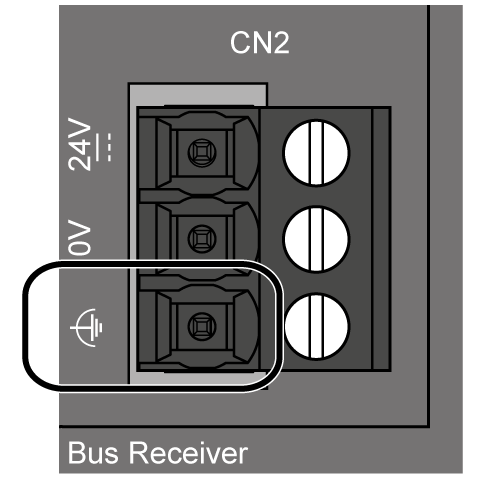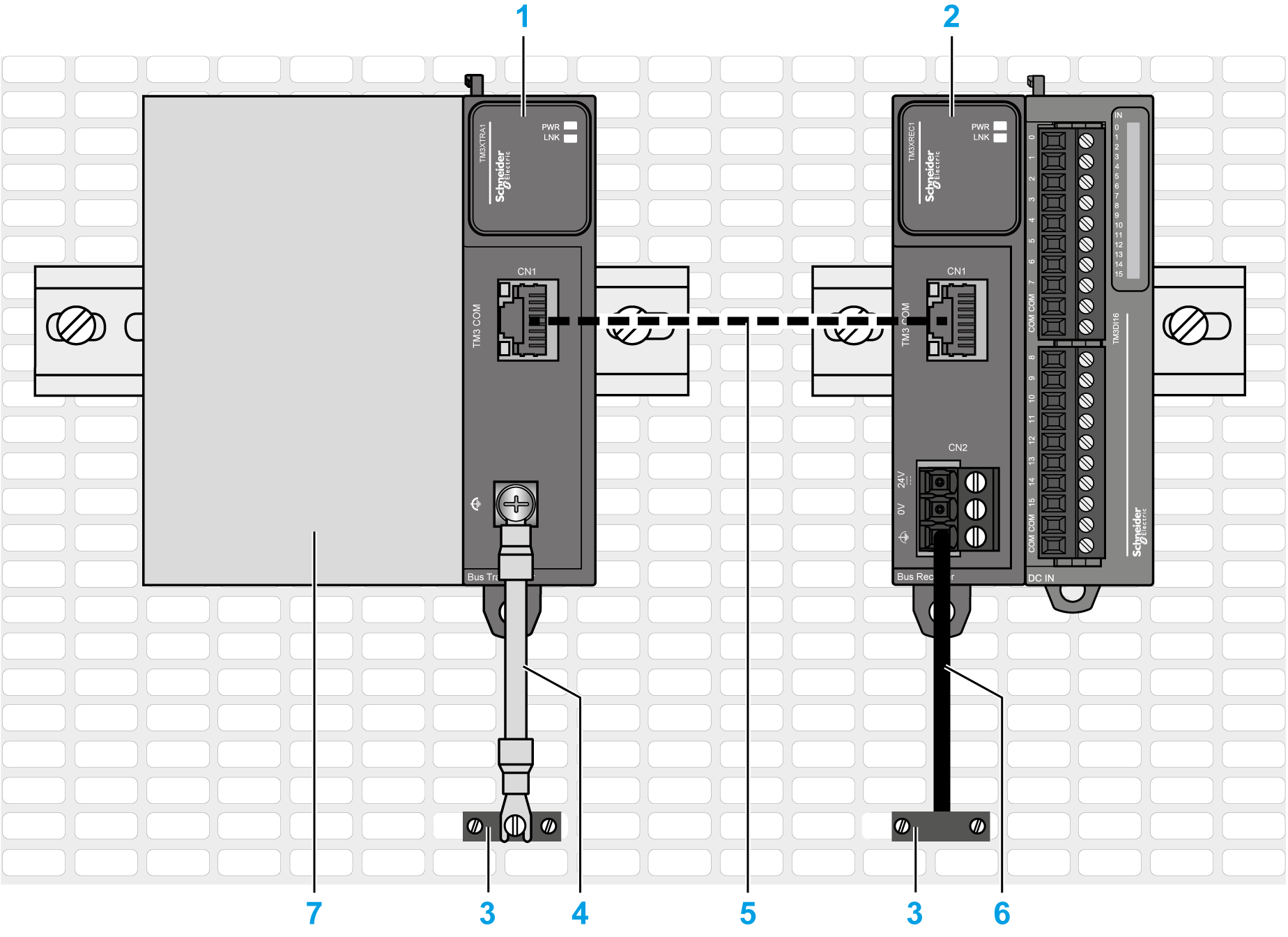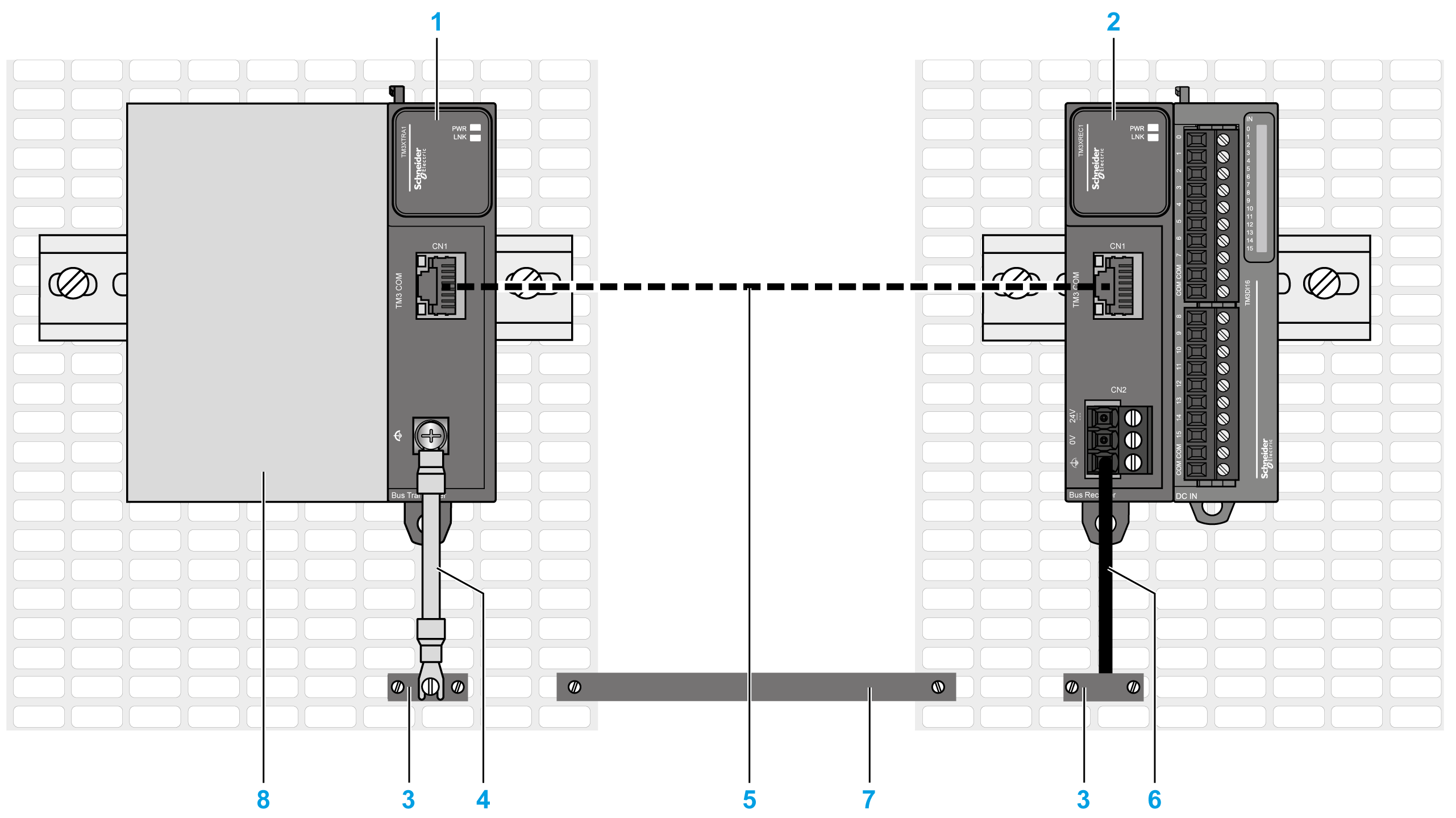Due to the effects of electromagnetic interference, cables carrying fast I/O, analog I/O, and the fieldbus communication signals must be shielded.
|
|
|
UNINTENDED EQUIPMENT OPERATION |
|
oUse shielded cables for all fast I/O, analog I/O, and communication signals. oGround cable shields for all fast I/O, analog I/O, and communication signals at a single point1. oRoute communications and I/O cables separately from power cables. |
|
Failure to follow these instructions can result in death, serious injury, or equipment damage. |
1Multipoint grounding is permissible if connections are made to an equipotential ground plane dimensioned to help avoid cable shield damage in the event of power system short-circuit currents.
The use of shielded cables requires compliance with the following wiring rules:
oFor protective earth ground connections (PE), metal conduit or ducting can be used for part of the shielding length, provided there is no break in the continuity of the ground connections. For functional ground (FE), the shielding is intended to attenuate electromagnetic interference and the shielding must be continuous for the length of the cable. If the purpose is both functional and protective, as is often the case for communication cables, the cable must have continuous shielding.
oWherever possible, keep cables carrying one type of signal separate from the cables carrying other types of signals or power.
Protective Earth Ground (PE) on the Backplane
The protective earth ground (PE) is connected to the conductive backplane by a heavy-duty wire, usually a braided copper cable with the maximum allowable cable section.
Cables carrying fast I/O, analog I/O, and the fieldbus communication signals must be shielded. The shielding must be securely connected to ground. Fast I/O and analog I/O shields may be connected either to the functional ground (FE) or to the protective earth ground (PE) of your TM3 expansion module. The fieldbus communication cable shields must be connected to the protective earth ground (PE) with a connecting clamp secured to the conductive backplane of your installation.
|
|
|
ACCIDENTAL DISCONNECTION FROM PROTECTIVE GROUND (PE) |
|
oDo not use the TM2XMTGB Grounding Bar to provide a protective earth ground (PE). oUse the TM2XMTGB Grounding Bar only to provide a functional ground (FE). |
|
Failure to follow these instructions can result in death, serious injury, or equipment damage. |
Functional Ground (FE) Connections
|
Step |
Description |
|
|---|---|---|
|
1 |
Connect the functional ground cable from the TM3XTRA1 functional ground screw to the conductive backplane. |
|
|
2 |
Connect the functional ground of the TM3XREC1 power supply connector to the conductive backplane. The functional ground cable requires a cross-section of at least 1.5 mm2 (AWG 16) and a maximum length of 120 mm (4.72 in.). |

|
This figure presents grounding with a common ground plane:

(1) TM3XTRA1
(2) TM3XREC1
(3) Functional ground (FE)
(4) Provided functional ground cable
(5) VDIP1845460••
(6) User-supplied grounding cable
(7) A controller, bus coupler or expansion module
This figure presents grounding with separated ground planes:

(1) TM3XTRA1
(2) TM3XREC1
(3) Functional ground (FE)
(4) Provided functional ground cable
(5) VDIP1845460••
(6) User-supplied grounding cable
(7) Equipotential ground connection
(8) A controller, bus coupler or expansion module